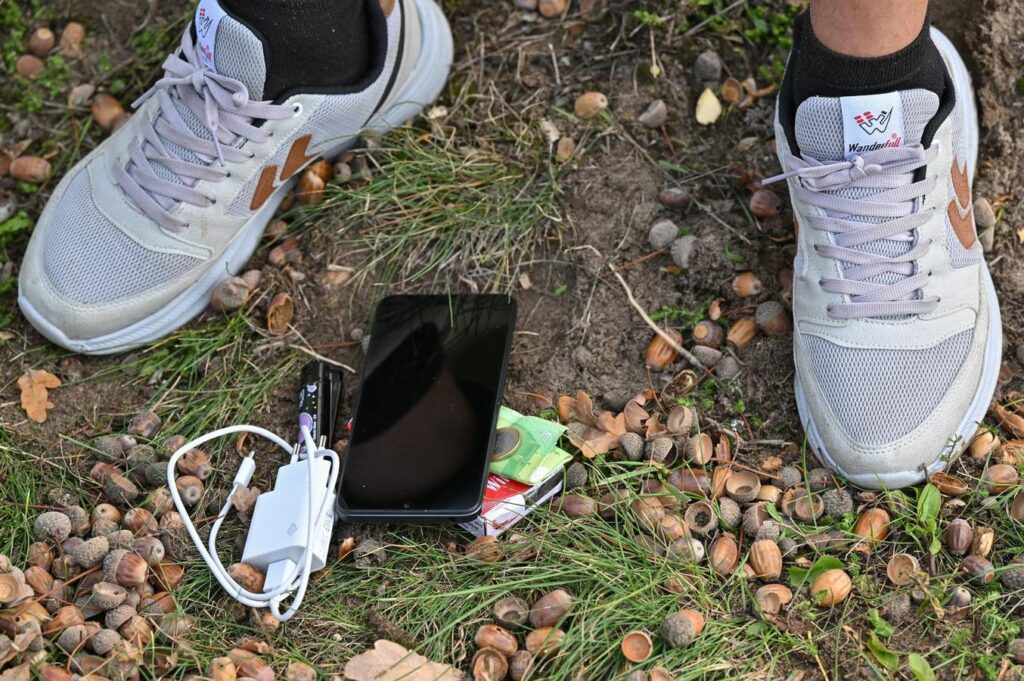Federal Prison Cell Phone Contraband
For those surrendering to prison, they often consider the trouble that got them there when faced with participating in any activity that would get them in more trouble. In many prison camps, the lowest level of security in the Federal Bureau of Prisons (BOP), cell phones are so prevalent that those who recently surrender can have one within days of arriving on the compound. According to a report by the Department of Justice’s Office of the Inspector General, the Federal Bureau of Prisons (BOP) recovered at least 8,700 contraband cell phones during fiscal years 2012 through 2014. In 2024, staff at Thomson Federal Prison recovered over 400 contraband phones and industry experts estimate that as many as 25% of all federal inmates may have access to contraband cell phones. That percentage is believed to be much higher at minimum and low security prisons.
How The Phones Get Into Prison
In response to the growing problem of contraband cell phones, legislative measures such as the Lieutenant Osvaldo Albarati Stopping Prison Contraband Act were introduced to increase penalties for smuggling contraband into prisons. In 2013, after completing his shift at the Metropolitan Detention Center (MDC) Guaynabo, Puerto Rico, Albarati, a BOP corrections professional, was shot and killed while he was driving on the Jose De Diego Expressway. The shooting was coordinate by federal inmates housed at MDC Guaynabo who coordinated the hit with cell phones.
Contraband phones are easy to get into prison camps. Corrupt staff, drones and drop-offs near the prison are the most common ways phones are introduced. Many camps have no fence or an unguarded perimeter that makes it easy for someone to pass contraband goods into the compound. The BOP has also had problems with its security cameras working, making breaches to the camp that much easier.
A contraband phone can carry a price of over $2,500 with Cash App or Venmo are used to complete the transaction. These transactions often pass through multiple accounts as a way of masking the receipt of payment. The high price demonstrates the demand and the risk associated with being caught with a cell phone. Inspector General Michael Horowitz stated in comments related to removing cell phones from prison, “A cell phone in a prison is a deadly weapon. Yet, as our investigative work continues to demonstrate, contraband cell phones have proven to be pervasive inside many federal prisons, a reality that undermines the safety and security of these institutions for BOP staff, inmates, and the public.”
Why Inmates Take The Risk
Inmates’ means of communication with the outside world are severely restricted, a privilege that can be revoked and is often unreliable. Federal prisoners have access to Corrlinks, an email system that only allows text-based messages—no hyperlinks or attachments. These emails are monitored, meaning all communication is saved and is not protected by attorney-client privilege.
Phone calls are also allowed, but they are recorded and limited to 15 minutes before being cut off. The experience resembles using a pay phone at an airport in the 1990s: several phones in a small area, with long lines and noisy surroundings, where anyone passing by can overhear the conversation. While regular mail is becoming less common in prison, it is still used, but it is always opened and read by authorities.
In-person visits are monitored but with limited supervision, typically by one or two correction officers stationed at a desk to ensure order is maintained. During visits, inmates cannot exchange papers or information. However, in the loud, crowded environment of the visiting area, many conversations remain private. That said, in-person visits come with a significant cost in terms of time and travel to reach the prison.
The Punishment
The punishment for individual inmates has not been effective in reducing demand. The Bureau of Prisons (BOP) has faced such a severe issue that it has resorted to mass punishments, locking down the entire prison until searches are completed and inmates provide information about how the phones are circulating within the facility. For the inmate caught with a phone, there are two major consequences. First, they will face punishment from the BOP, usually a 41-day loss of Good Conduct Time. Second, there is a social cost among the inmate population: the person caught is expected to purchase a replacement phone for those who were impacted by the incident.
The Cost To Tax Payers
The presence of contraband cell phones comes with a significant cost to the Bureau of Prisons (BOP) and, by extension, to taxpayers. While some phones are sent to FBI labs for analysis, not all phones are processed due to the sheer volume, far exceeding the resources available for proper investigation. Each time a phone is discovered, the BOP conducts an investigation and holds a disciplinary hearing, all while staff is already stretched thin. The BOP spends over $300 million annually to compensate for staff shortages.
A significant cost of cell phones in federal prisons is the 41-day loss of Good Conduct Time imposed as punishment. When the BOP adds 41 days to a prisoner’s sentence, it means an additional 41 days of incarceration costs. At an average cost of $120 per day (a typical figure for the BOP), that adds $4,920 in expenses for a single prisoner. With around 78,000 prisoners in minimum and low-security facilities, and if 25% of them have access to a cell phone, that equals nearly 20,000 phones. If half of those phones are confiscated and the prisoners receive the 41-day sanction, the total cost in additional incarceration would be $49.2 million.
Vicious Cycle
When an inmate or group of inmates is caught with a cell phone, it often results in sanctions against the entire prison population. This typically includes the suspension of visitation, phone use, and email privileges. Families are not notified about these lockdowns or the suspension of privileges, leaving many to show up for scheduled visits only to find them suddenly cancelled. The only way for inmates to communicate with their families during these lockdowns is through contraband cell phones. In their desperation to reassure their loved ones, inmates often risk making calls to let their families know they are okay. One phone call can quickly lead to more.
These phones are more than just communication tools—they are essentially mini-computers that allow inmates to access news and legal information to assist with their own cases. Many attorneys are conflicted about whether or not to take calls from their clients, but the difficulty of arranging legal phone calls often leads to shortcuts or compromised communication.
Solution
There is no easy solution to this. The BOP cannot condone the use of cell phones, though they do allow tablets that have very limited features such as movies, games or books. However, federal law prohibits the use of certain scrambling devices because it limits access to emergency services such as 911. Congress is now getting involved with a proposed bill that will lift the restriction allowing some scrambling devices to be used. Until then, the cat and mouse between inmate and BOP will continue.
Read the full article here
















